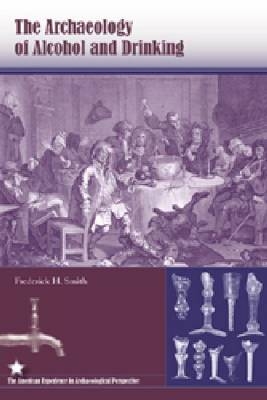
The Archaeology of Alcohol and Drinking
Seiten
2008
University Press of Florida (Verlag)
978-0-8130-3290-0 (ISBN)
University Press of Florida (Verlag)
978-0-8130-3290-0 (ISBN)
- Titel z.Zt. nicht lieferbar
- Versandkostenfrei innerhalb Deutschlands
- Auch auf Rechnung
- Verfügbarkeit in der Filiale vor Ort prüfen
- Artikel merken
Through its complex history, alcohol has served many cultural functions, often constructive ones. This book identifies key themes associated with alcohol production, distribution, and consumption. It discusses industrial and home production of alcoholic beverages and both public and clandestine drinking.
Through its complex history, alcohol has served many cultural functions, often constructive ones. For centuries it has been used as a valuable economic commodity, a medicinal tool, a focus of social gatherings, and a mechanism for psychological escape.Frederick Smith identifies key themes associated with alcohol production, distribution, and consumption. He discusses industrial and home production of alcoholic beverages and both public and clandestine drinking. He defines the contexts in which drinking takes place and the motivations - social and antisocial - for alcohol consumption.As a case study, Smith examines archaeological evidence of alcohol use from a cave site in Barbados, proposing that major historical events can be influenced by the social and spiritual use of alcohol. At the same time, Smith argues, alcohol can also provide people with a temporary respite from the challenges of daily life.
Through its complex history, alcohol has served many cultural functions, often constructive ones. For centuries it has been used as a valuable economic commodity, a medicinal tool, a focus of social gatherings, and a mechanism for psychological escape.Frederick Smith identifies key themes associated with alcohol production, distribution, and consumption. He discusses industrial and home production of alcoholic beverages and both public and clandestine drinking. He defines the contexts in which drinking takes place and the motivations - social and antisocial - for alcohol consumption.As a case study, Smith examines archaeological evidence of alcohol use from a cave site in Barbados, proposing that major historical events can be influenced by the social and spiritual use of alcohol. At the same time, Smith argues, alcohol can also provide people with a temporary respite from the challenges of daily life.
Frederick H. Smith, assistant professor of anthropology at the College of William and Mary, is the author of Caribbean Rum.
| Erscheint lt. Verlag | 30.12.2008 |
|---|---|
| Reihe/Serie | American Experience in Archaeological Perspective |
| Zusatzinfo | illustrations |
| Verlagsort | Florida |
| Sprache | englisch |
| Maße | 149 x 223 mm |
| Gewicht | 323 g |
| Themenwelt | Sachbuch/Ratgeber ► Essen / Trinken ► Getränke |
| Geisteswissenschaften ► Archäologie | |
| Geschichte ► Teilgebiete der Geschichte ► Kulturgeschichte | |
| ISBN-10 | 0-8130-3290-3 / 0813032903 |
| ISBN-13 | 978-0-8130-3290-0 / 9780813032900 |
| Zustand | Neuware |
| Haben Sie eine Frage zum Produkt? |
Mehr entdecken
aus dem Bereich
aus dem Bereich
der stille Abschied vom bäuerlichen Leben in Deutschland
Buch | Hardcover (2023)
C.H.Beck (Verlag)
23,00 €
vom Mittelalter bis zur Gegenwart
Buch | Softcover (2024)
C.H.Beck (Verlag)
12,00 €


